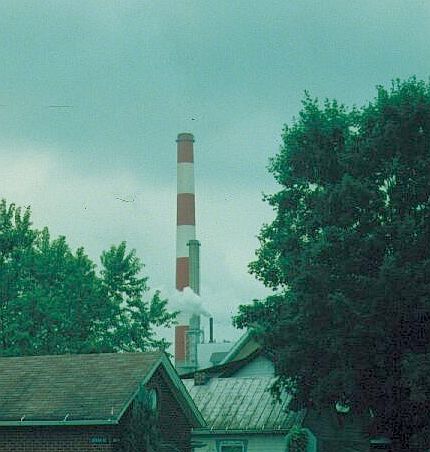Economic Geography - Lab 3: Location Quotient

Using Location Quotient to find concentrated activity - Vacant Housing
The purpose of this exercise is to introduce students to the Location Quotient, a statistic used to measure the ratio of expected versus actual values for a number of variables. You wil also practice downloading data from the census bureau. The location quotient can be used to map the relative distribution or concentration of some industry, or other activity (such as fire stations, or medical facilities). You would use the Location Quotient to find out if something activity is over represented (or dense) in a location.
Where:
- LQ = Location Quotient of i
- Xi= Count of subset items (people, businesses, etc.) at place i
- Nj= Count of items (people, businesses) at place i
- ** Sometimes the multipler (x 100) is omitted and a value of 1 is the base value, rather than 100.
For our purposes, essentially this equation translates thus: The location quotient of industry X at sub-region A is equal to (the number of workers in industry X at sub-region A divided by the total number of workers in all industries in in sub-region A) divided by the quotient of (number of workers in industry X in all subregions divided by the total number of workers in all industries in all subregions).
It is a ratio of ratios.
The location quotient is used to map the relative distribution of some industry, or other activity (such as fire stations, or medical facilities). You could use the Location Quotient to find out if something activity is over represented (or dense) in one location but not in another.
If your LQ value is less than 100 then local concentration of that activity is less than expected given the trends in the region as a whole.
If your LQ value is 100 then local concentration of that activity is as expected given the trends in the region as a whole.
If your LQ value is more than 100 then local concentration of that activity is greater than expected given the trends in the region as a whole.
Your job is then to interpret the implications of the LQ and the relative concentration of activity it represents. An under representation of fast food businesses in a town, may suggest that there is unmet demand. An over representation of the same may suggest that another restaurant would not do well there....or you could perhaps conclude that its a tourist town and that restaurants tend to be more numerous in tourist destinations.
Others suggest that a high location quotient is often indicative of a basic employment (brings money in from outside the region) status because such an industry is employing more people than the total population of the subregion would suggest. This is a useful notion to a point, but need to be considered cautiously.
This is your task:
You have been hired as an real estate consultant. Your job is to assist your employer locate a suitable location for a new housing project in Louisiana. Your job is to find the parish (their version of counties) with the lowest housing vacancy rates.
Data Gathering
- Go to www.census.gov
- Click on the link to the American Factfinder
- From the Decennial Census data, click on the link Get Data
- From the 2000 Census data, select the Summary File 1, 100-Percent Data File by selecting the radial button to its left.
- Select the Detailed Tables from the menu that appears.
- From the Geographic Types, select "County". Note the selections available to you will change
- From Select a state, choose Louisiana
- From select "All Counties" from the next prompt.
- Click on the Add button, and the list of counties will appear in the blank selections box below the Add button.
- Click on the Next > button
- Select from the list of variables or "tables" by clicking on (highighting) the following variables:
- Hint you can select multiple variables by holding down the Control button as you click to highlight.
- H1. Housing Units
- H5 Vacancy Status
- Click Show Result
- Click on the Print/Download link across the blue navigation bar near the top of the page. Select download from the dropdown menu.
- A separate download window will (should) open, with download options.
- Select from the options, the comma delimited (.csv) file with the rows and columns transposed. This is most useful for G.I.S. applications. Make a note of the various options available to you. The various formats demonstrate different utitlites in different situations.
- Click OK. Depending on the set up of the computer, you may be prompted to open this file in Microsoft Excel, or download it. Either is fine.
- Once you have opened the file in Excel, cut and past the vacancy data in a fashion so that those columns of data are aligned witht the "housing units" data from table H1.
- Now you may begin to calculate the location quotient for each parish in Louisiana on a number of vacancy rates. The location quotient in this instant will tell you the relative concentration of vacancies in individual parishes, in terms of the overall state vacancy rates.
Answers
You are to provide the following data to your boss by your next meeting. Don't use dollar signs or commas, just numbers or letters.



